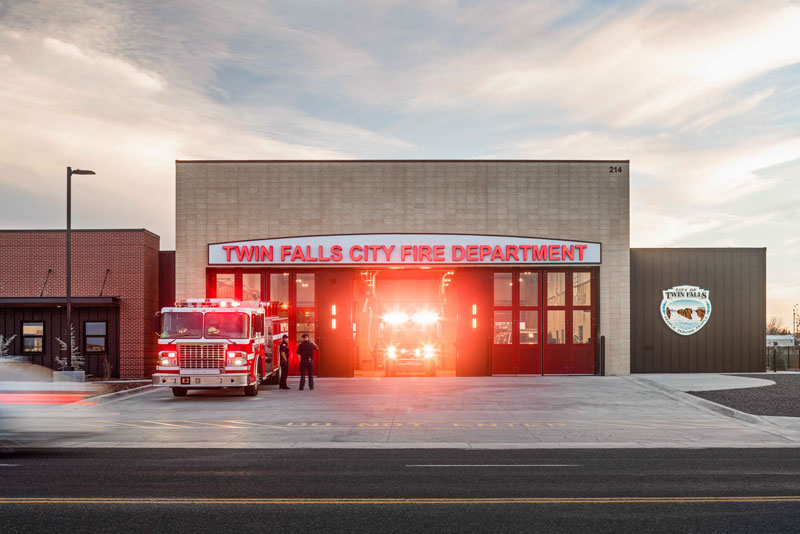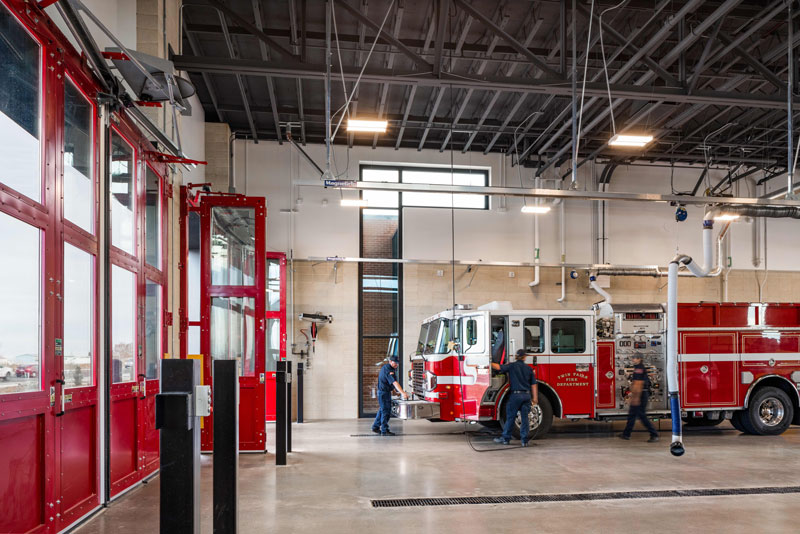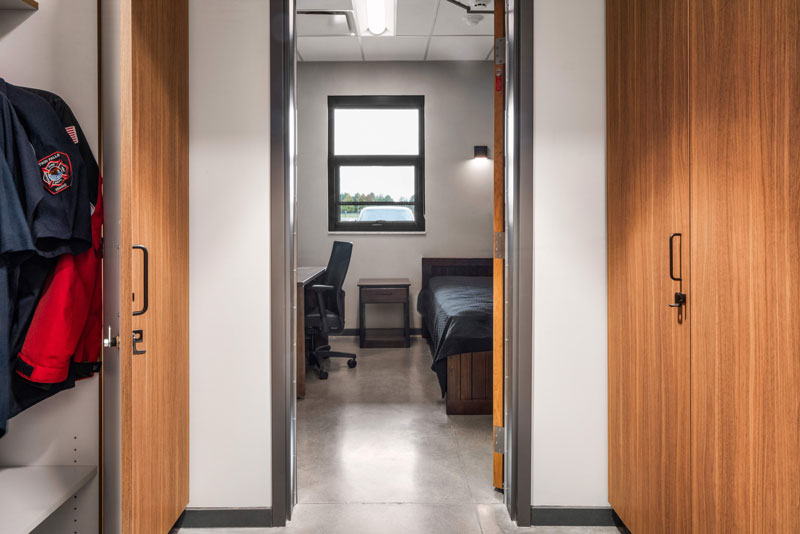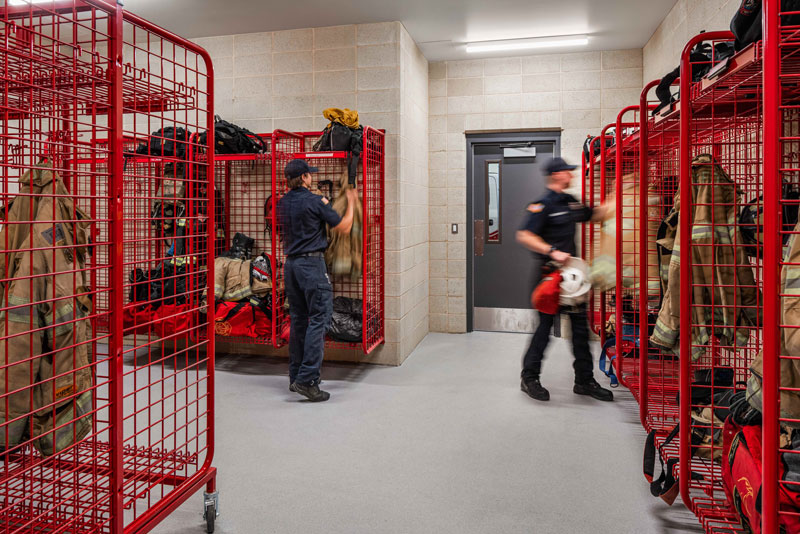
Pivot North Architecture was hired by Twin Falls Fire Department to develop a master plan and long term programming plan that would create a prototypical fire station design which could be applied to multiple stations. The end result of those studies is the development of the department’s new Fire Stations 2 and 3.
Clint Sievers, principal at Pivot North Architecture, says the fire department had concerns about having a consistency among its new stations, both in the living spaces and on the apparatus floor. “They were concerned about having consistency in letting their firefighters move from one station to another, and know easily how to get from living areas of the station to the apparatus bays when an emergency alarm sounds,” Sievers points out.

“The other concerns are the ones we have in every station we design, and those are the health and safety of firefighters, which is priority one,” he notes. “It’s extremely important to organize the station into hot, warm and cold zones, where firefighters have an area to clean contaminants off of their bodies and gear when returning to the station, before they go into the station’s living areas. We also wanted the stations to fit into the community, with their look reflecting the history of the area through their design, so we used brick and signage as a nod to the Twin Falls history.”
Les Kenworth, chief of Twin Falls Fire Department, says that “Stations 2 and 3 are replacements for old fire stations built in the 1960s that needed to be updated with the latest in safety and decontamination equipment, as well as the size of the apparatus bays. For example, our new Pierce Enforcer pumper would not fit in those two stations.” He notes that Twin Falls has four fire stations: a headquarters station 1, the two being replaced, and an Aircraft Rescue and Firefighting (ARFF) station.

“We have a total of 43 paid full-time firefighters, including a battalion chief and officers,” Kenworthy observes, “as well as a chief, deputy chief, fire marshal and half-time fire inspector.” He adds that the population of the district is 54,000 residents, which swells to more than 100,000 people each day.
Kenworth says the new Station 2, which was recently completed and occupied, is approximately 13,000 square feet with three double-deep, drive-through apparatus bays that have fast-opening bi-fold doors. He notes the living area has seven individual dorm rooms, six for firefighters and one battalion chief’s dorm. Station 2 has three unisex shower/bathrooms, while the battalion chief has an ensuite shower/bathroom.

The Station committee was made up of both firefighters and officers, Kenworthy points out, and it toured fire stations in the Seattle and Northwest states area to determine best practices in station design. The committee chose an open kitchen/dining area with an island as best suited for its needs, separated from the dayroom by a wall with double openings and by food lockers on the kitchen side of the wall. “The firefighters built the dining room table, singed the wood and epoxied the department’s emblem in the middle,” Kenworthy says. “The bottom of the table is shaped like our famous bridge over the Snake River.”
Other amenities on the living side of Station 2 include an exercise room with garage doors opening to an outside workout area, including a basketball half court, and a crew work room/training room. The entire station is covered by a Honeywell Phoenix G2 alerting system where each dorm room has its own controller. When a firefighter comes to work, they sign in their ID with an app and that room will be alerted only for calls for the apparatus the firefighter is assigned to.

Sievers says that the hot and warm zones of the station are on the opposite side of the apparatus bays from the living areas. He says those spaces hold a decon room with a walk-in shower, an eyewash station, a helmet washer, a stainless steel double sink for cleaning, a standard washer and dryer, an extractor washer for turnout gear, a turnout gear dryer, and a self-contained breathing apparatus (SCBA) washer.
A turnout gear storage room is adjacent to the area and has entrances from the decon area and the apparatus bays, holding the two sets of bunker gear assigned to each firefighter. Also, the station has an air room with a cascade system and air filling stations with a door to the exterior since the space will be used as a regional air fill unit. All the floors in the area are epoxy coated to prevent contamination from traveling to other areas.

Kenworthy points out that the design of Station 2 allows it to be scaled down to be used as the blueprint for Station 3, which is currently under construction. Station 3 is a two-bay double-deep, drive-through station, with a layout almost identical to Station 2, he says. Station 2 will have five individual dorm rooms, three shower/bathrooms, and a similar kitchen/dining, dayroom and exercise room, as well as decon and turnout gear storage areas, but scaled down from that of Station 2.
ALAN M. PETRILLO is a Tucson, Arizona-based journalist, the author of three novels and five nonfiction books, and a member of the Fire Apparatus & Emergency Equipment Editorial Advisory Board. He served 22 years with the Verdoy (NY) Fire Department, including in the position of chief.

